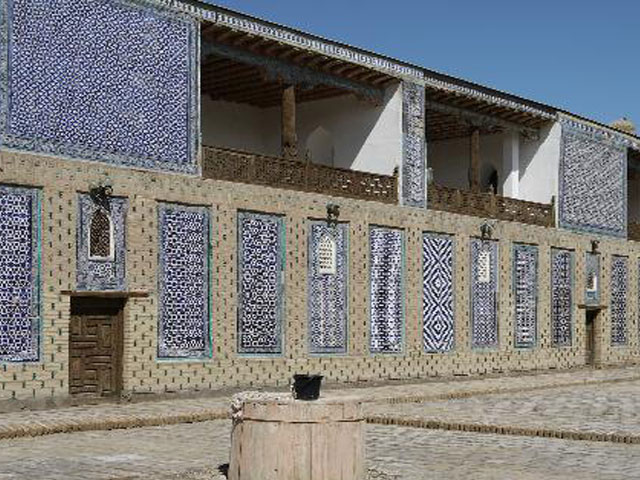The main palace of Khivan khans - Tash-Khauli - takes a leading place among the Ichan-Kala monuments.
The palace construction lasted from 1830 till 1838. As recorded by building inscriptions on the wooden columns, marble bases, and ceilings. The main architects of the palace were Nur Mohammed Tadzhikhon and Kalandar Khivagi, who replaced him later. The elements of Khivan residential houses and country residences - "khauli” - are widely used in the palace’s complex architecture: a closed court yard, shady one-two-columned ayvans (terraces) and loggias, ornamented walls and rounded turrets.
It is agreed that the Allakuli-khan palace construction was carried out in several stages. At first, the harem with its rectangular court yard was built up with ayvans. One and two storey residential and auxiliary premises were added as an independent construction.
All premises, adjoining the court yard, irrespective of their purpose, are decorated richly. A variety of majolica panel ornaments, wooden columns and marble carvings are complemented by ceiling paintings and court yard composition. The oblique geometry and exact symmetry of the official architecture as a whole, reminds us of the richest picture gallery.
The mekhmonkhona was the second part of the palace construction - the place for formal receptions. A small court yard with a round eminence for the yurt installation is built up facing different directions. The palace reception ceremony was carried out in the main ayvan, opening to the north. The arzkhona (the court) occupies all the south-western part of the palace. It is almost twice as large as the mekhmonkhona.
The majolica facing was painstakingly added by the master craftsman Abdulla Dzhin. The reception room was decorated by him in an original way. Panels with small vegetative ornaments are enlivened with large flowers on an intensively dark blue background at the ayvan.






















